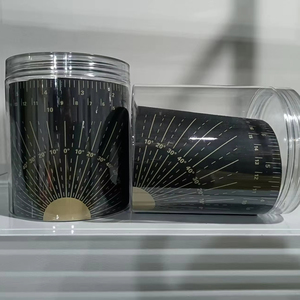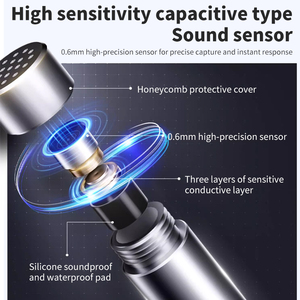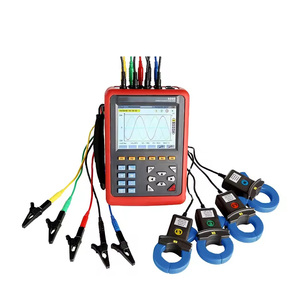
All categories
Featured selections
Trade Assurance
Buyer Central
Help Center
Get the app
Become a supplier

(3472 products available)















































Various quality checking instruments are used in different industries to ensure products and services meet the required standards and specifications. Here are some common types and their applications:
Dimensional Gauges and Measurement Tools
These instruments measure physical properties such as length, width, height, diameter, and volume to ensure products are within specified tolerances. Common tools include calipers, micrometers, height gauges, and coordinate measuring machines (CMMs).
Surface Quality Instruments
These assess the surface roughness, texture, and finish of materials to ensure they meet quality standards. Surface roughness gauges and profilometers are commonly used tools in this category.
Non-Destructive Testing (NDT) Tools
NDT tools examine materials and structures for signs of defects or damage without destroying the item. Common methods include ultrasonic testing, magnetic particle testing, dye penetrant testing, and radiographic testing.
Visual Inspection Tools
These tools aid in the visual examination of products for defects, blemishes, or inconsistencies. Magnifying glasses, microscopes, borescopes, and digital cameras are commonly used for this purpose.
Metallurgical Instruments
These tools analyze the properties and structure of metals and alloys. Scanning electron microscopes (SEM), optical microscopes, and hardness testers are essential for quality control in metallurgy.
Environmental Testing Equipment
These instruments assess a product's performance and durability under various environmental conditions. Temperature and humidity chambers, salt spray test chambers, and UV exposure test machines evaluate a product's resistance to corrosion, temperature fluctuations, and sunlight.
Calibration Tools
These instruments ensure other measurement tools are accurate by comparing them to known standards. Calibration blocks, rings, and spheres are used to calibrate various measuring instruments.
Pressure Testing Instruments
These instruments assess the pressure resistance of materials and components. Pressure gauges, pressure chambers, and hydrostatic test setups measure a product's ability to withstand internal and external pressures.
Leak Testing Instruments
These tools detect leaks in products and systems. Vacuum decay testers, helium leak detectors, and bubble leak testers identify even minute leaks in seals, welds, and joints.
Various industries utilize quality checking instruments to provide accurate and reliable measurement results. Some application scenarios include the following:
Manufacturing Industry
Manufacturers rely on quality control tools to monitor production processes and ensure products meet necessary specifications. For instance, calipers measure product dimensions, and surface roughness gauges evaluate surface finishes.
Aerospace Industry
This industry has very strict quality control measures. Therefore, it uses many quality control tools that check the standards and precision of the components manufactured. Common tools used are coordinate measuring machines (CMMs) and ultrasonic thickness gauges.
Automotive Industry
In the automotive industry, quality control tools are used to ensure that vehicle components are manufactured with precision and accuracy. They also check for defects in the components. Some of the tools used are laser measuring systems, CMMs, and optical comparators.
Construction Industry
The construction industry uses quality control instruments to evaluate the quality and strength of the materials used. The tools also monitor the dimensions of structural components. Some tools used are concrete test hammers, moisture meters, and laser distance meters.
Electronics Industry
This industry uses quality control tools to check for defects in printed circuit boards (PCBs) and ensure proper soldering of components. They also check the dimensions of electronic components. Some tools used are thermal imaging cameras, microscopes, and capacitance meters.
Medical Industry
The medical industry uses quality control tools to ensure that medical devices are manufactured with precision and accuracy. They also check for defects in the devices. Some tools used are laser micrometers, CMMs, and microscopes.
Textile and Apparel Industry
This industry uses quality control tools to check for defects in fabrics and ensure proper measurements of garments. Some tools used are fabric thickness gauges, color measurement devices, and tensile strength testers.
Follow the below guidelines when selecting quality control instruments for accurate and precise measurements.
Purpose
Various fields utilize different instruments to check the parameters of interest. For instance, the pH meter is used to measure the acidity of the soil in agriculture. At the same time, it measures the moisture and temperature levels, helping farmers understand the conditions better for improved crop production. Therefore, it is important to consider the main purpose of the instrument and what measurement it will offer.
Quality
The quality of the quality control instruments is essential for accurate and precise measurements. It is important to read reviews and check the manufacturer's reputation and the device's certifications. High-quality instruments may be expensive, but they offer long-term benefits with their accuracy and reliability. Investing in a good quality instrument pays off well, especially when the readings are vital for business or health purposes.
Calibration
Instruments must be calibrated regularly to ensure they give accurate results. Some devices come with calibration solutions and instructions, while others require the user to send them to the manufacturer for calibration. It is essential to consider how often the instrument needs calibration and if it is an easy process.
User-Friendly
Most quality control instruments are technical, and basic knowledge is required to operate them. However, considering the ease of use and the complexity level of the device is necessary. Simple devices with easy-to-read LCD screens and straightforward functions are better, especially if many people use them. This avoids confusion and ensures everyone gets accurate readings.
Portability
If the quality control instrument is to be used in different fields or locations, then portability is essential. Lightweight and battery-operated devices are easy to carry around and use anywhere. Check the instrument's weight and whether it comes with a protective case for easy transportation.
Defect Detection
Quality control tools can find various faults in products, such as rips, spots, or unevenness. They ensure that the products match the set quality expectations and find any problems that might have been missed in earlier production stages.
Dimensional Accuracy
Tools for checking quality assist in verifying that items have the proper measurements and proportions. This is very important for items that must fit specified standards, as even small variations can lead to major problems.
Material Evaluation
In some instances, tools for assessing quality can be used to check the composition and characteristics of materials. This is essential for ensuring that the materials utilized in a product are of the proper kind and quality, especially in sectors such as construction or manufacturing.
Real-time Monitoring
A number of modern quality control instruments provide real-time monitoring of product parameters. This enables immediate correction of any deviations from the standard, reducing waste and improving efficiency.
Data Analysis
Many contemporary quality control instruments include data analysis features. This enables companies to track trends over time, giving them the means to identify areas for improvement and make informed choices regarding the production process.
User-friendly Interfaces
Most quality control tools have simple, easy-to-use interfaces. This guarantees that employees can use the tools effectively and interpret the data they provide with ease, reducing the need for extensive training.
Robust Construction
Quality control tools are usually made to be strong and durable. They must be able to withstand the working environment, which may involve exposure to harsh materials or high levels of activity.
Portability
Many quality control tools are portable, which allows for convenient use in various locations. This is especially useful in large production facilities where products may be checked at different stages in various areas.
Calibration
Quality control tools need regular calibration to ensure their accuracy. This involves adjusting the tool to match a known standard, ensuring that its measurements remain precise over time.
What is the purpose of quality instruments?
These tools are used to assess, monitor, and maintain different attributes of products such as color, temperature, humidity, pH, and more. They help in identifying any discrepancies or defects, enabling businesses to ensure that their products meet the required quality standards and are fit for sale.
How to take care of quality instruments?
To maintain quality checking instruments, store them under appropriate conditions, frequently calibrate them, clean them with recommended cleaning agents, and handle them delicately.
What are the most common types of quality checking instruments?
Some common quality checking instruments include pH meters, moisture meters, colorimeters, thermometers, hygrometers, and various other sensors and gauges.